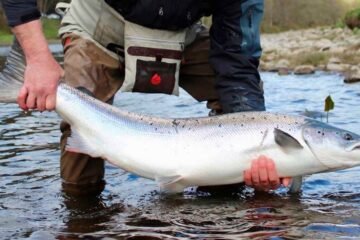Angus and Fife hardest hit as below-average rainfall triggers early environmental alerts
Scotland is facing the early onset of water scarcity risks after a prolonged dry spell continued into April, raising concerns among environmental regulators, agricultural stakeholders, and climate experts.
The Scottish Environment Protection Agency (Sepa) issued a warning on Thursday, citing signs of stress in rivers and groundwater supplies, especially in parts of the south and east. Businesses have been urged to take proactive steps to reduce water usage and brace for what could be a drier-than-normal spring and summer season.
Rivers running low, groundwater slipping
In its latest Water Situation Report, Sepa painted a concerning picture: rainfall in March was well below seasonal averages across much of the country. Southern regions saw as little as one-third of expected precipitation, while parts of Angus and Fife — already grappling with a 10-month dry trend — recorded less than half of normal levels.
As a result:
-
Rivers across the country are now classified as running low to extremely low
-
Groundwater levels have dropped below April 2022 levels, which were already dry
-
The only exception is Moray, where winter rainfall kept groundwater levels higher than average
Sepa said the low water table and drying riverbeds increase the chances that water scarcity could take hold earlier in the season than usual — a trend being increasingly driven by climate volatility.

Climate resilience now a front-line issue
Kenny Boag, Sepa’s head of environmental performance, issued a clear warning.
“Water scarcity is becoming a growing challenge in Scotland,” Boag said. “The data from March shows there is an increased risk that water scarcity could occur early in the season this year.”
He confirmed that Sepa would begin weekly water scarcity updates in May — or sooner if conditions deteriorate. The goal is to provide timely updates so farmers, industries, and local authorities can act early.
The move comes as part of Sepa’s wider corporate strategy, which places climate resilience at the core of its long-term mandate. With climate-linked drought patterns now showing up more frequently in the UK’s traditionally wetter regions, even Scotland — long perceived as water-rich — is having to rethink its approach.
Angus and Fife now at centre of concern
Parts of Angus and Fife are now seen as the most vulnerable regions in Scotland. These areas have endured nearly a year of persistently low rainfall, creating cumulative pressure on surface and groundwater systems.
In April 2022, Scotland experienced what was then considered an unusual dry season. But 2025 is tracking ahead of even that — with lower groundwater levels and broader geographic impact.
Only Shetland recorded above-average rainfall in March, offering some localized relief in an otherwise concerning national trend.
Agricultural sector feels the pinch first
While Scottish Water has moved to assure the public that reservoir levels remain stable — sitting at 92% capacity last week, slightly down from the seasonal average of 95% — the scarcity warning will primarily impact agriculture.
Fruit and vegetable growers, in particular, are being advised to review their water usage and irrigation plans. During dry spells, irrigation becomes critical — but so does sustainable use.
Scottish Water emphasized that while the domestic supply remains secure, water is still a “precious resource” and small conservation efforts matter.
“Things people can do to save water include taking shorter showers and turning the tap off when brushing teeth,” a Scottish Water spokesperson said.
Data snapshot: Where Scotland stands
| Region | Rainfall (March 2025) | Groundwater Status | Notes |
|---|---|---|---|
| Angus | <50% of normal | Extremely Low | Worst-hit area so far |
| Fife | <50% of normal | Very Low | 10-month dry trend |
| South Scotland | <33% of normal | Low | General rainfall deficit |
| Shetland | Above average | Normal | Only exception in Scotland |
| Moray | Avg. to above avg. | Above Normal | Good winter rainfall helped |
Government monitoring — but questions linger
A Scottish Government spokesperson acknowledged the growing risk, saying:
“This warning from Sepa highlights the ongoing impact of climate change on our water resources.”
They added that the government is working with Sepa, Scottish Water, and key stakeholders to ensure that Scotland can respond to any scarcity risks in a sustainable and coordinated manner.
However, concerns persist in the agricultural sector that current mitigation planning may not be fast enough to respond to the pace of climate-driven changes.
A glimpse into a drier future?
2024 was something of an anomaly. Thanks to favorable rainfall patterns, Scotland managed to avoid significant water scarcity issues last year. But this year’s early warning signs have reignited fears that such years will become the exception, not the rule.
With the climate crisis intensifying, even Scotland — often associated with green hills, mist, and lochs — must prepare for more Mediterranean-style water stress.
Sepa’s messaging has shifted notably in recent years. Once cautious, the tone is now more direct, reflecting an urgency driven by hard data and real-world impact.
“Helping Scotland become more climate resilient isn’t just an environmental priority,” Boag said. “It’s now a business and social imperative.”


















